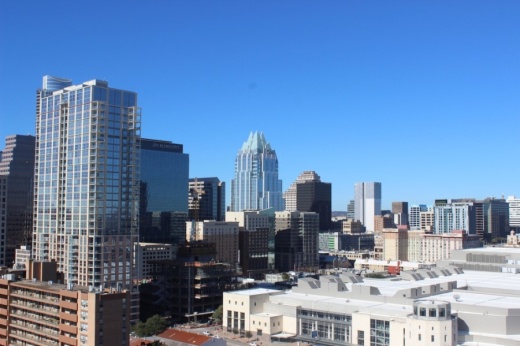Hospitalizations, which health officials uphold as a key metric in the county’s handling of the virus, have also seen a hilly trend. The seven-day rolling average of daily hospital admissions began the month at 62.4. A week later, that number shot up to 75.1 but has since seen a consistent downward slope. On July 21, the number stood at 63.4, the lowest it has been since July 1.
Last week, officials acknowledged the falling numbers as a glimmer of hope. Dr. Mark Escott, Austin-Travis County interim health authority, went further July 22, firmly calling the decreases in cases and hospitalizations a trend.
“I think the case numbers are really going down,” Escott told reporters during a media briefing July 22. He said the health department administered a record 6,000 tests last week and that private practice facilities have also increased testing. And despite the widespread testing, he said, confirmed cases are going down.
However, Escott and Austin Public Health Director Stephanie Hayden warned residents not to get ahead of themselves.
“Now’s not the time to dance; now’s the time to remain cautious,” Escott said. “We’re certainly pleased numbers aren’t going up, but they haven’t gone down much yet. ... We’ve got a lot of work to do still.”
Hayden pushed the community to “hold the line” and to continue encouraging socially conscious behavior, such as wearing masks and refraining from large gatherings.
Officials are closely monitoring cases this week as the city approaches 2.5 weeks since the July 4th weekend, a holiday which health officials worried could result in a crisis unless residents stayed home and avoided festivities. The city shut down parks, pools, trails and recreation amenities to help curb the potential for gatherings.
“If we don’t continue to see a bounce this week in cases and hospitalizations, we can say that we avoided a significant outbreak from July 4,” Escott said.





